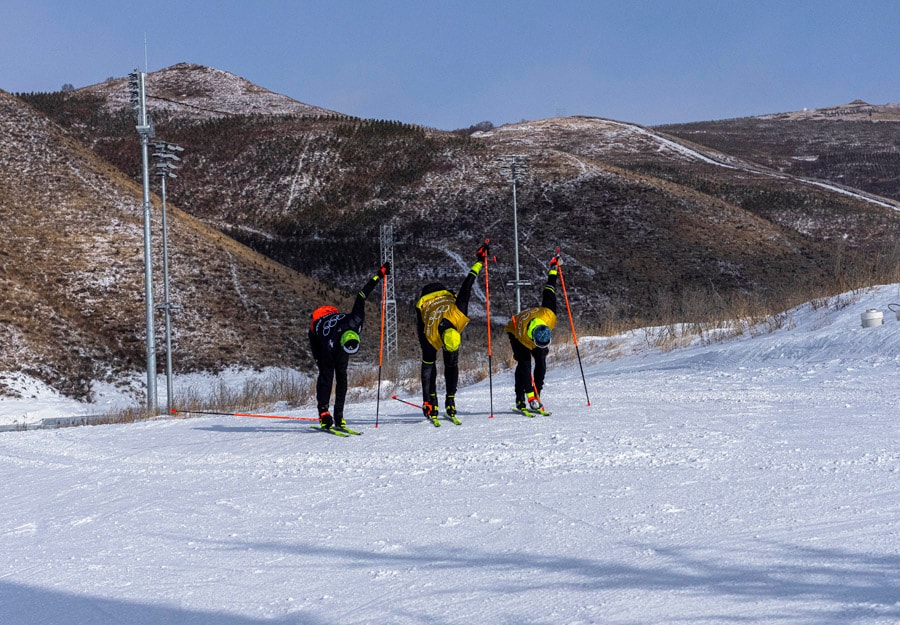
Beijing wanted the Winter Olympics. All it needed was snow
The competitions that began this weekend are for the first time taking place almost entirely on artificial snow, necessitating an Olympic snow-making and water-management operation of enormous scale, and foreshadowing the reality of snow sports everywhere as the planet warms
 Athletes train at the national cross-country skiing center in Zhangjiakou, China, on Jan. 31, 2022, a day after a light snow dusted the nearby hills. The environmentally unfriendly secret of winter sports is that many competitions take place on artificial snow, and China’s water-scarce capital had to go to enormous lengths to make enough of it. (Hiroko Masuike/The New York Times)
Athletes train at the national cross-country skiing center in Zhangjiakou, China, on Jan. 31, 2022, a day after a light snow dusted the nearby hills. The environmentally unfriendly secret of winter sports is that many competitions take place on artificial snow, and China’s water-scarce capital had to go to enormous lengths to make enough of it. (Hiroko Masuike/The New York Times)
BEIJING — China did not move mountains to host the 2022 Winter Olympics. But it flooded a dried riverbed, diverted water from a key reservoir that supplies Beijing and resettled hundreds of farmers and their families, all to feed one of the most extensive snow-making operations in the history of the Games.
This is what happens when the International Olympic Committee decides to bring the Winter Games to a place almost completely lacking in one of the main ingredients for winter sports: snow. What’s more, Beijing and its nearby mountains did not have that much water to make the artificial kind, either.
Machine-made snow has played a major role in winter sports for decades, even in snowier places like Norway, Switzerland and Colorado. In Beijing’s version of the Winter Games, the competitions that began this weekend are for the first time taking place almost entirely on artificial snow, necessitating an Olympic snow-making and water-management operation of enormous scale, and foreshadowing the reality of snow sports everywhere as the planet warms.
On the mountains where the Alpine competitions are taking place, which do not have any recreational skiing, narrow strips of white, visible from miles away, now cut through the brown.
©2019 New York Times News Service







